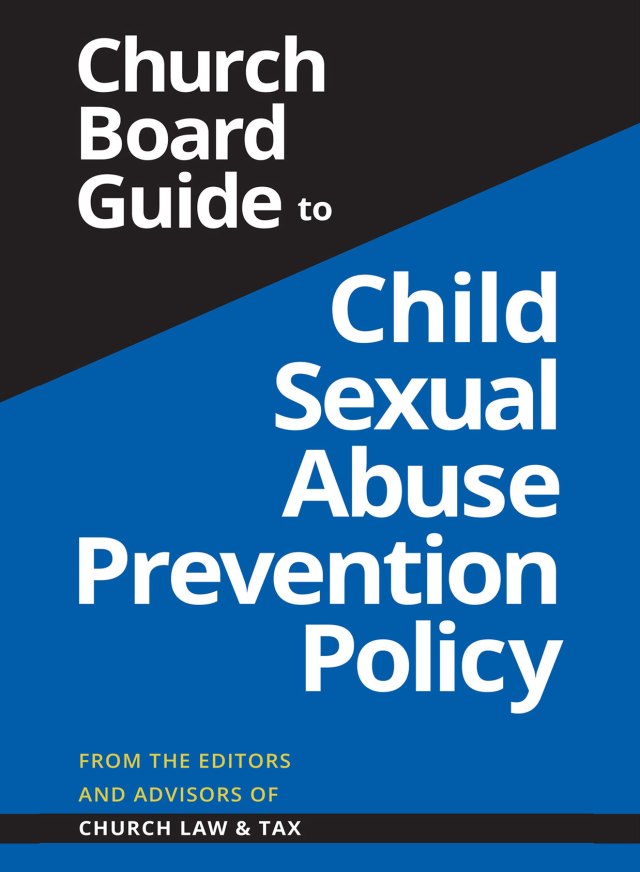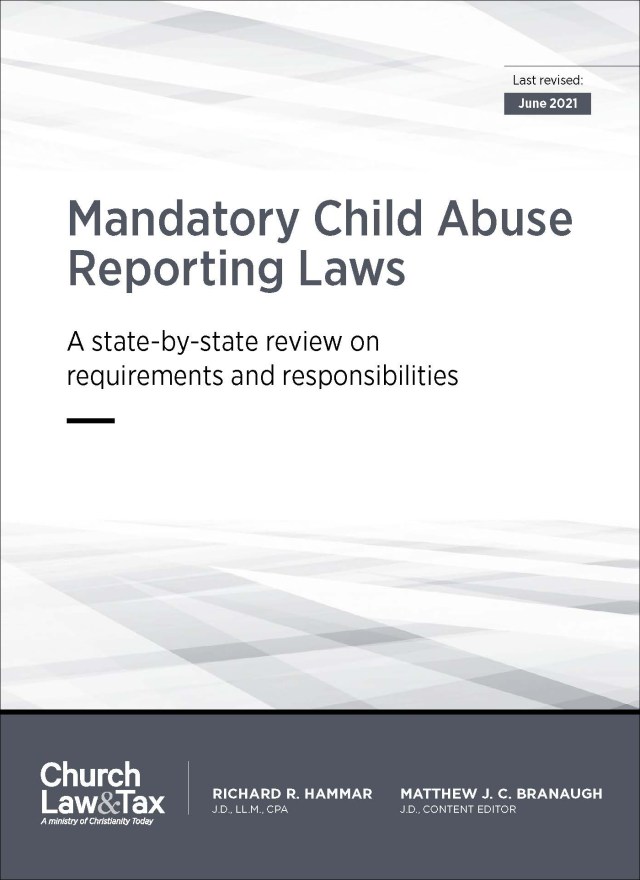Key point 10-09.1. Some courts have found churches liable on the basis of negligent supervision for a worker’s acts of child molestation on the ground that the church failed to exercise reasonable care in the supervision of the victim or of its own programs and activities.
Key point 10-17.1. Punitive damages are monetary damages awarded by a jury “in addition to compensation for a loss sustained, in order to punish, and make an example of, the wrongdoer.” They are awarded when a person’s conduct is reprehensible and outrageous. Most church insurance policies exclude punitive damages. This means that a jury award of punitive damages represents an uninsured risk.
A trial court in Ohio awarded nearly $6 million to the parents of a 2-year-old child who was spanked with a ruler by a teacher in a church-operated preschool. A family’s two minor children were enrolled in a church-operated preschool. One evening, after the father picked up his children from the preschool, he observed numerous fresh cuts, welts, and red marks on his two-year-old son’s back, buttocks and thighs. The marks were consistent with being hit by a ruler. The boy told his father that a male preschool employee had “spanked” him with a “knife.” The worker was a 58-year-old male who had served in various compensated and volunteer positions in the church, and who served on an “as needed” basis in the church’s school and preschool. Though he was not a licensed teacher and never had a prior job that required him to work with young children, he was occasionally assigned by the church to work at the school or preschool. Because of ratio requirements and the large number of children in the preschool program, at least one other adult always was working with him.
At home, upon being shown pictures of various objects, the boy pointed to a ruler as the object used to “spank” him. After the boy’s mother arrived home and looked at the marks on her son, she spoke with their pediatrician and the police, who advised her to take the child to a hospital. The emergency physicians found the boy’s injuries to be consistent with physical abuse, and the matter was forwarded to the local Division of Family Services and police for investigation. When the preschool director was shown photos of the boy’s injuries, she was “shocked” and provided no explanation. The boy’s parents attempted to speak with preschool employees to ascertain what happened. They soon received a letter from the church ordering them not to come on the property and threatening them with criminal prosecution for trespass if they returned to the preschool. The parents had no further contact with church or preschool staff.
The parents, on behalf of their minor son, sued the church and the male preschool worker who the boy claimed had spanked him (the “defendants”). The parents asserted claims of battery and intentional infliction of emotional distress against the preschool worker and claims of negligent supervision and intentional infliction of emotional distress against the church. Following a seven-day jury trial, the jury returned verdicts against both defendants, and awarded the parents compensatory damages of $134,865 and punitive damages of $100,000 against the preschool worker, and compensatory damages of $764,235 and punitive damages of $5 million against the church. The jury also found plaintiffs entitled to attorney fees of nearly $700,000 from the church. These damages were later reduced by the trial court to $3 million. The defendants appealed.
Negligent supervision
The court noted that for the parents to prevail on their claim of negligent supervision against the church, they had to establish (1) the existence of an employment relationship between the church and the perpetrator; (2) the perpetrator had a propensity to physically harm or abuse minors in his care; (3) the church had actual or constructive knowledge of this propensity; (4) the perpetrator’s act or omission caused the injuries; and (5) the church’s negligence supervising the perpetrator was the cause of the victim’s injuries. The defendants only challenged the third element—that the church knew or should have known of the perpetrator’s propensity to abuse minors. The court noted that the perpetrator had been left alone with children in the preschool on only two occasions. On the first such occasion, a three-year-old child sustained a fractured skull. The perpetrator claimed that the child had “bumped heads” with another child, but the other child exhibited no evidence of such a collision. The second incident, a few months later, was the injury in this case. The church acknowledged that it was aware of the first incident, but had no way of knowing that it was due to child abuse rather than an accident. As a result, it had no elevated duty of supervision. The court disagreed:
The record also indicates that although its administration knew [the other child] was seriously injured while in [the perpetrator’s] sole care [the church] conducted no investigation of the incident, did not make further inquiries of [the perpetrator] concerning the matter, did not provide him with further training to prevent serious injury from occurring to another child, and, most importantly, did not change how it supervised [the perpetrator] after the incident. Approximately three months later, the very next time the church permitted him to be alone with the young children [he] physically abused the victim.
Based on such evidence, the jury reasonably could infer that the circumstances surrounding [the other child’s] injury were suspicious: he received a skull fracture and concussion when he purportedly “bumped heads” with another boy who suffered no apparent injury. Moreover, not only did the church’s witnesses provide inconsistent and contradictory testimony surrounding the incident, but the church failed to investigate the incident, to provide the incident report to [the other boy’s] mother upon her request, and to inform any of the other [children’s] parents about the serious injury to [the other child]. With that evidence, the jury reasonably could conclude that the church knew or strongly suspected that he had something to do with [the other child’s] serious injury but nevertheless again allowed the perpetrator, without further training or more supervision, to be the sole care provider for the young children.
The court further noted that the church “engaged in a concerted effort to cover up what had happened. Immediately after it became aware of the allegations of physical abuse [church officials] spoke with church employees and allowed them to coordinate their stories before the formal investigations began.”
Emotional distress
The court noted that prior to the incident, the victim was a happy, easy-going, content child who was independent, fully potty trained, did not mind being alone, and shut the door when he went to the bathroom. After the incident, his personality changed. He was often unhappy, became frantic if separated from his parents or other family members, was fearful of being in a room alone, was clingy and wanted to be held, often wet the bed, and would not shut the door when he went to the bathroom. A treating psychologist opined that the child was suffering from post-traumatic stress disorder.
The court concluded that there was substantial evidence to affirm the trial court’s findings of “extreme and outrageous conduct” by the church that led to the victim’s extreme emotional distress.
Punitive damages
Most of the monetary damages the jury awarded were based on punitive damages. The court noted that punitive damages are recoverable if there is clear and convincing evidence that a defendant in a civil case acted with malice. Malice is defined as either (1) a state of mind under which a person’s conduct is characterized by hatred, ill will or a spirit of revenge, or (2) a conscious disregard for the rights and safety of others that has a great probability of causing substantial harm. Actual malice “can be inferred from conduct and surrounding circumstances which may be characterized as reckless, wanton, willful or gross.” The court concluded that the following factors supported the conclusion that the church acted with malice in this case:
- It failed to ensure that the perpetrator knew its corporal punishment policy;
- It failed to investigate the serious injury to the child in the head-bumping incident.
- It failed to increase its supervision and training of the perpetrator after the head-bumping incident that occurred while children were in the same perpetrator’s sole custody.
- After the head-bumping incident, the church failed to ensure that the perpetrator was not left alone with the preschool children
- It failed to adequately investigate the victim’s injuries and the allegations of physical abuse.
- It failed to notify the parents of other children in the preschool program that children in the classroom were seriously injured.
- It failed to notify parents when allegations of physical abuse were made against a staff member who cared for their children.
Application. This case is instructive for the following reasons:
1. The injury in this case probably would not have occurred had the church not violated its own “two adult” policy that mandated the presence of a second adult when preschool children were present. Church leaders should understand that courts and juries will expect churches, like any other organization, to abide by their policies. A failure to do so may be used as evidence of negligence.
2. The perpetrator in this case was a 58-year-old male who had no prior experience working with preschool children, and was not a licensed teacher. This arrangement was irregular at best.
3. The church’s liability for both negligent supervision and emotional distress was based almost entirely on the church’s failure to respond adequately to the prior head-bumping incident. The court faulted the church for not investigating that incident adequately; not increasing its supervision of the perpetrator (in whose sole custody the accident had occurred); and failing to enforce its two-adult policy following the head-bumping incident. The court also cited the following additional factors in support of its ruling: The church failed to adequately investigate the second incident involving the victim in this case; failed to notify the parents of other children in the preschool program that children in the classroom were seriously injured; failed to notify parents when allegations of physical abuse were made against a staff member who cared for their children; and refused to have any contact or communication with the victim’s parents.
4. The court concluded that the church’s actions supported the punitive damages verdict. This is significant for two reasons. First, punitive damages generally are not covered under any insurance policy, since insuring against the “malicious” conduct that supports such damages would be contrary to public policy. Second, the malice standard that supports punitive damages is similar to the standard that supports personal liability of church board members. Every state has a law that provides limited immunity to uncompensated officers and directors of nonprofit organizations. This immunity is “limited” in the sense that it does not apply in cases of willful or wanton misconduct or gross negligence. As a result, punitive damages and personal liability of church board members may go hand in hand.
5. This case illustrates the importance of retaining legal counsel when handling any claim of personal injury, especially to a child. Churches should immediately notify their insurer of such claims. In most cases, the insurer will promptly appoint legal counsel to advise the church. 2008 WL 5423454 (Ohio App. 2008).
For more information on keeping children safe in your ministry, go to ReducingTheRisk.com.
This Recent Development first appeared in Church Law & Tax Report, November/December 2009.



